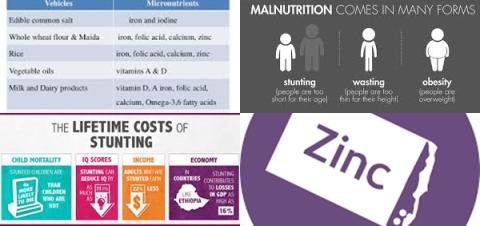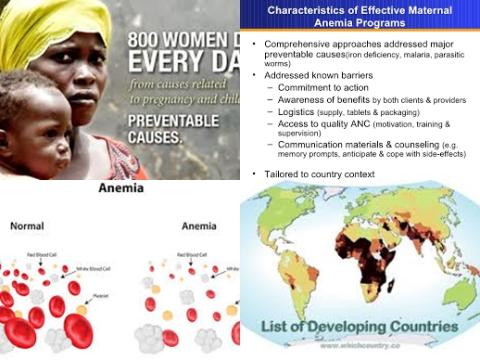Fortification of staple foods with zinc does not reduce risk of stunting

Objectives:
Zinc deficiency is a global nutritional problem, particularly in children and women residing in settings where diets are cereal based and monotonous. It has several negative health consequences. Fortification of staple foods with zinc may be an effective strategy for preventing zinc deficiency and improving zinc-related health outcomes. Therefore, this meta-analysis (review article) has been conducted.
What are the beneficial and adverse effects of fortification of staple foods with zinc on health-related outcomes and biomarkers of zinc status in the general population?
Study design:
This review article included 8 RCTs (709 participants); seven were from middle-income countries of Asia, Africa, Europe and Latin America where zinc deficiency is likely to be a public health problem.
The interventions lasted between one and nine months.
Results and conclusions:
The investigators found in 3 studies with 158 participants that foods fortified with zinc increased the serum or plasma zinc levels with 2.12 µmol/L in comparison to foods without added zinc [MD = 2.12 µmol/L, 95% CI = 1.25 to 3.00 µmol/L; low-quality evidence].
The investigators found in 2 studies with 397 participants that participants consuming foods fortified with zinc versus participants consuming the same food without zinc had similar risk of underweight [average risk ratio = 3.10, 95% CI = 0.52 to 18.38; low-quality evidence].
The investigators found in 2 studies with 397 participants that participants consuming foods fortified with zinc versus participants consuming the same food without zinc had similar risk of stunting [RR = 0.88, 95% CI = 0.36 to 2.13; low-quality evidence].
The investigators found no significant difference in serum or plasma zinc levels in participants consuming foods fortified with zinc plus other micronutrients comparing with participants consuming the same foods with micronutrients but no added zinc [MD = 0.03 µmol/L, 95% CI = -0.67 to 0.72 µmol/L; 4 studies of low-quality evidence with 250 participants].
The investigators found no adverse effect of fortification of foods with zinc on indicators of iron or copper status.
The investigators concluded fortification of foods with zinc may improve the serum zinc status of populations if zinc is the only micronutrient used for fortification. However, when zinc is added to food in combination with other micronutrients, it may make little or no difference to the serum zinc status. Effects of fortification of foods with zinc on other outcomes including zinc deficiency, children's growth, cognition, work capacity of adults or on haematological indicators are unknown. Given the small number of trials and participants in each trial, further investigation of these outcomes is required.
Original title:
Fortification of staple foods with zinc for improving zinc status and other health outcomes in the general population by Shah D, Sachdev HS, […], Peña-Rosas JP.
Link:
https://www.ncbi.nlm.nih.gov/pubmed/27281654
Additional information of El Mondo:
Find more information/studies on food fortification/malnutrition and zinc right here.
